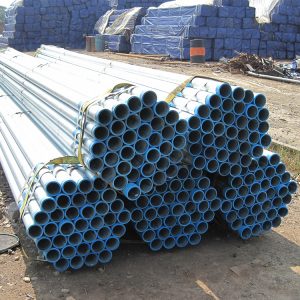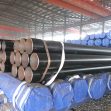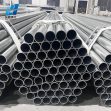How to correctly cut your galvanized steel pipe in applications
As almost all the insiders know, the cutting of steel pipe is an important process in the whole pipe production in a mill, especially in order to cater to an appropriate custom fit for your specific applications. There are different methods and ways of cutting pipe, and each depends on what types of pipe you are cutting. In a sense, it seems necessary for steel pipe manufacturers to follow the proper steps so as to ensure the final successful finished products for your future projects. As a rule, how to cut galvanized steel pipe generally depending on the metal pipe’s outer diameter as well as its wall thickness. There is a brief rundown on a couple of the most common tube-cutting methods as follows.

1. Laser Cutting
Despite the high capital cost, a laser cutting system provides a range of capabilities and associated advantages. Easily controlled with automation equipment (CNC), a laser allows an operator to cut, deburr, inspect, and even pack material while the laser runs continuously. Lasers, which concentrate a tremendous amount of heat energy into an extremely small area, produce narrow kerf widths, tight tolerances, and minimal HAZs. They cut with little distortion to the workpiece such as cold rolled steel pipe, nickel alloys, and titanium. However, the inside of the tubing must be coated with antispatter fluid.
2. Abrasive Cutting
Abrasive sawing is a basic, manual method of cutting-to-length product to the customer’s specification in any alloy. An abrasive saw operates with a circular abrasive blade or resin-composition wheel (either wet or dry) that grinds through the product. While an abrasive saw is easy to use and requires little or no setup time, it cannot provide a square cut or tight tolerances. Because the process uses a cutting or burning action, it is not efficient for thick-walled material. It also might leave a heat-affected zone (HAZ) that can affect secondary processing. In addition, it will produce significant kerf and a heavy burr that might have to be removed by deburring. In that regard, it is not suggested to adopt this method to cut galvanized steel pipe in your project if you have much more specific requirements for your applications.
3. Band Saw Cutting
Band saw cutting is a fully automatic process and the most common method for cutting rod, bar, pipe, and tubing. This process is excellent for large-volume cutting. Some band saws can handle large product bundles. Band saw cutting is a viable method for cutting a variety of shapes, such as square steel pipe, rectangle pipe, channels, I beams, and extrusions. Despite the many advantages of band saw cutting, it is not an efficient process for cutting thin-walled products. Moreover, band saw cutting produces a burr and does not achieve tight tolerances.
Tel: +86 18202256900 Email: steel@fwssteel.com










